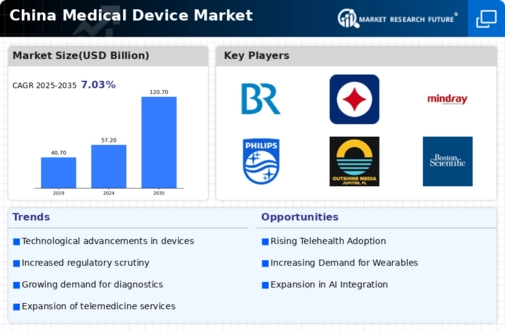The China Medical Device Market has experienced significant growth and transformation, driven by advancements in technology, increasing healthcare expenditures, and an aging population that demands innovative medical solutions. This dynamic landscape is characterized by intense competition among local and multinational companies striving to capture market share through the development and distribution of diverse medical device. The regulatory framework in China has also evolved, fostering an environment conducive to innovation while ensuring patient safety. Companies are continually adapting to emerging trends, such as digital health, telemedicine, and minimally invasive procedures, to meet the changing needs of healthcare providers and patients.
The competitive insights reveal that firms must not only focus on their product offerings but also invest in research and development, strategic partnerships, and effective marketing to maintain relevance and drive growth. Medtronic has established a strong presence in the China Medical Device Market, leveraging its extensive portfolio that includes advanced technologies in areas such as cardiovascular device, diabetes management, and surgical innovations. The company’s strengths lie in its commitment to research and development, allowing it to introduce cutting-edge products tailored to the unique healthcare needs of the Chinese population.
Medtronic has cultivated vital partnerships and collaborations that enhance its distribution capabilities and streamline access to its offerings within the country. This strategic positioning not only reinforces Medtronic’s market leadership but also aligns with China’s healthcare reforms aimed at improving patient outcomes through the integration of innovative medical solutions. Bayer has also made significant inroads into the China Medical Device Market, focusing on areas such as imaging technology and interventional solutions. The company’s key products and services in China encompass diagnostic imaging device that facilitate improved patient diagnosis and treatment planning.
Bayer's strengths in this market are reflected in its robust research initiatives, which pave the way for the introduction of novel technologies and approaches tailored to local healthcare demands. The company has strategically pursued mergers and acquisitions that bolster its market offerings and enhance its competitive positioning. This commitment to growth and innovation, combined with a deep understanding of the Chinese healthcare landscape, has enabled Bayer to develop strong relationships with healthcare stakeholders and maintain its relevance in an increasingly competitive environment.



















